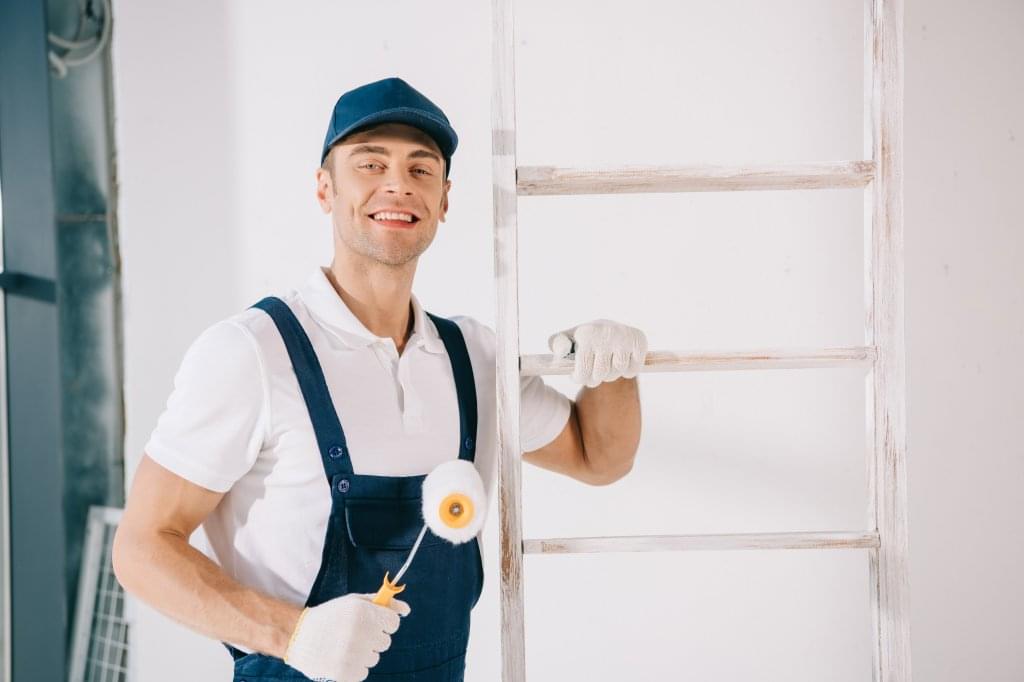The Ultimate Guide to Removing Stubborn Grease From Wood Cabinets
Your wood cabinets have seen it all – from bacon grease splatters to cooking oil buildup that seems impossible to scrub away. If you’re tired of looking at grimy cabinet doors and ready to restore their original beauty, this comprehensive guide has your back.
This guide is perfect for homeowners, renters, and DIY enthusiasts who want to tackle stubborn grease removal without hiring expensive cleaning services or risking damage to their wood finishes.
You’ll learn how to identify different types of grease stains and choose the right cleaning approach for each one. We’ll walk you through proven step-by-step methods that work for everything from light buildup to those rock-hard grease deposits that have been building up for years. Plus, you’ll discover how to properly restore and protect your freshly cleaned cabinets so they stay beautiful longer.
Say goodbye to those embarrassing kitchen cabinets and hello to a kitchen you’ll actually want to show off to guests.
Identify Different Types of Grease and Their Impact on Wood Cabinets
Cooking grease and oil stains from daily kitchen use
Kitchen cabinets take a beating from everyday cooking activities. When you’re sautéing vegetables, frying bacon, or preparing any meal involving oils and fats, tiny droplets become airborne and settle on nearby surfaces. These microscopic particles might seem harmless at first, but they create a thin, sticky layer that attracts dust and dirt.
Different cooking methods produce varying types of grease deposits. Deep frying creates heavier, more viscous residues that can form thick films on cabinet surfaces. Sautéing and pan-frying typically leave lighter oil mists that spread across larger areas. Even seemingly clean cooking methods like steaming vegetables can release oil vapors that eventually settle on your cabinets.
The type of oil you cook with also affects the cleanup challenge. Vegetable oils, olive oil, and butter each leave distinct residue patterns. Animal fats from cooking meat create particularly stubborn deposits that solidify as they cool, making them harder to remove over time.
Food residue buildup that hardens over time
Beyond cooking oils, food particles themselves contribute to cabinet grime. Flour dust from baking, sugar splatters from mixing, and sauce droplets from cooking all combine with grease to form complex, layered stains. This combination creates a cement-like coating that becomes increasingly difficult to remove.
Humidity and temperature changes in your kitchen cause these mixed residues to expand and contract, helping them bond more tightly to cabinet surfaces. What starts as easily wipeable spills transforms into hardened deposits that require specialized cleaning approaches. The longer these buildups remain untreated, the deeper they penetrate into your cabinet’s finish.
Smoke and steam residue that creates sticky films
Cooking smoke carries microscopic grease particles that create an invisible film across all kitchen surfaces. This residue feels slightly tacky to the touch and acts like a magnet for additional dirt and grease. Steam from boiling water, especially when cooking pasta or rice, carries dissolved particles that dry into a filmy layer.
These airborne deposits are particularly challenging because they coat areas you might not expect, including the tops of upper cabinets and inside cabinet frames. The sticky nature of smoke residue means it accumulates faster than other types of kitchen grime.
How grease penetrates different wood finishes and damages cabinet surfaces
Wood cabinet finishes respond differently to grease exposure based on their composition and application method. Here’s how various finishes handle grease contamination:
| Finish Type | Grease Resistance | Damage Pattern | Cleaning Difficulty |
|---|---|---|---|
| Painted | High | Surface staining, paint softening | Moderate |
| Polyurethane | Very High | Minimal penetration | Easy |
| Lacquer | Moderate | Can cause cloudiness | Moderate to Hard |
| Oil-based stain | Low | Deep penetration, darkening | Very Hard |
| Raw wood | Very Low | Deep absorption, permanent staining | Extremely Hard |
Painted surfaces generally resist grease penetration but can suffer from paint degradation when harsh cleaners are used repeatedly. Polyurethane finishes offer excellent protection but can show water spots if not properly maintained.
Older cabinets with worn finishes are particularly vulnerable. Small cracks or scratches in the protective coating create entry points for grease to reach the underlying wood. Once grease penetrates the wood grain, it becomes nearly impossible to remove completely without refinishing.
The grain pattern in wood also affects how grease spreads. Open-grain woods like oak allow deeper penetration compared to tight-grain varieties like maple. Understanding your cabinet’s specific finish and wood type helps you choose the most effective cleaning strategy while avoiding damage to the surface.
Essential Tools and Materials for Effective Grease Removal
Natural cleaning solutions that protect wood surfaces
White vinegar mixed with warm water creates one of the most effective natural degreasers for wood cabinets. Mix equal parts white vinegar and water in a spray bottle for daily maintenance, or use a 2:1 ratio for tougher grease buildup. The acidity cuts through grease without damaging wood finishes when used properly.
Dish soap designed for cutting grease works exceptionally well on wood surfaces. Choose a gentle formula like Dawn or similar brands, mixing just a few drops with warm water. This solution removes grease while remaining mild enough for regular use on painted or stained cabinets.
Baking soda serves as both a gentle abrasive and deodorizer. Create a paste by mixing baking soda with small amounts of water, or sprinkle it directly on stubborn spots before scrubbing. For extra cleaning power, combine baking soda with white vinegar to create a foaming action that lifts grease from wood grain.
Castile soap offers another wood-safe option that’s particularly effective for finished cabinets. Mix two tablespoons of liquid castile soap with one quart of warm water. This plant-based cleaner removes grease without leaving residue or causing damage to delicate finishes.
Commercial degreasers safe for cabinet finishes
Krud Kutter Original Concentrated Degreaser stands out as a professional-grade option that’s safe for most cabinet finishes. Dilute according to package directions and test in an inconspicuous area first. This biodegradable formula tackles heavy grease without harsh chemicals.
Simple Green All-Purpose Cleaner provides reliable grease removal while remaining gentle on wood surfaces. The concentrated formula allows you to adjust strength based on grease severity. It’s non-toxic and won’t discolor most cabinet finishes when used as directed.
Weiman Wood Cleaner specifically targets wood surfaces and removes grease while conditioning the wood. This product works particularly well on natural wood cabinets and helps maintain the wood’s appearance during cleaning.
Goo Gone Kitchen Degreaser focuses specifically on kitchen grease and food residue. The citrus-based formula breaks down sticky buildup without damaging cabinet hardware or finishes. Always follow up with a clean, damp cloth to remove any residue.
| Product | Best For | Dilution Needed | Wood-Safe Rating |
|---|---|---|---|
| Krud Kutter | Heavy grease | Yes | Excellent |
| Simple Green | General cleaning | Yes | Very Good |
| Weiman | Natural wood | No | Excellent |
| Goo Gone | Sticky residue | No | Good |
Proper cleaning cloths and scrubbing tools
Microfiber cloths represent the gold standard for cabinet cleaning. These synthetic fibers trap grease and dirt without scratching delicate finishes. Keep separate microfiber cloths for different cleaning stages – one for applying cleaning solution, another for rinsing, and a third for final drying.
Cotton rags work well for applying cleaning solutions and initial grease removal. Old t-shirts or washcloths provide good absorption without leaving lint. Avoid paper towels on wood surfaces as they can leave scratches and residue.
Soft-bristled toothbrushes excel at cleaning detailed areas like raised panels, carved elements, and around hardware. Choose brushes with synthetic bristles that won’t shed during cleaning. Electric toothbrushes can provide extra scrubbing power for stubborn spots.
Melamine foam sponges (like Magic Erasers) remove scuff marks and stubborn grease stains, but use them sparingly. These abrasive sponges can dull glossy finishes if used too aggressively. Test in hidden areas and use light pressure.
Plastic scrapers help remove hardened grease without gouging wood surfaces. Choose scrapers specifically designed for delicate surfaces, and always scrape in the direction of the wood grain when possible.
Safety equipment to protect yourself during cleaning
Rubber gloves protect your hands from cleaning chemicals and prevent skin irritation from prolonged exposure to grease-cutting agents. Choose gloves that provide good grip when wet to prevent dropping bottles or tools.
Eye protection becomes important when using spray cleaners or working above eye level. Safety glasses prevent splashes from reaching your eyes, especially when cleaning upper cabinets where overspray can occur.
Proper ventilation ensures you’re not breathing concentrated fumes from cleaning products. Open windows and use exhaust fans when working with commercial degreasers. Some products require specific ventilation recommendations listed on their labels.
Non-slip footwear prevents accidents when standing on step stools or ladders to reach upper cabinets. Rubber-soled shoes provide better traction on potentially wet floors from cleaning overspray.
A step stool or small ladder provides safe access to upper cabinets without overreaching. Choose stable platforms with wide bases and non-slip surfaces. Never stand on chairs or unstable surfaces when cleaning high areas.
Prepare Your Cabinets for Deep Cleaning Success
Remove All Items and Hardware from Cabinets
Start by completely emptying your cabinets of dishes, food items, and any stored belongings. This gives you unrestricted access to all surfaces and prevents your items from getting damaged by cleaning solutions. Place everything on a clean counter or dining table, grouping similar items together for easy reorganization later.
Next, remove cabinet doors and drawers when possible. Most cabinet doors lift off their hinges easily – just open the door fully and lift straight up. For drawers, pull them out completely and set them aside. This approach allows you to clean every angle and crevice without awkward maneuvering around tight spaces.
Take out all hardware including handles, knobs, and hinges. Use a screwdriver to carefully remove these pieces, placing all screws in a small bowl or labeled bag so nothing gets lost. Clean hardware separately in warm, soapy water while you work on the cabinet surfaces. This prevents cleaning solutions from pooling around metal fixtures and potentially causing discoloration or damage.
Test Cleaning Solutions on Hidden Cabinet Areas
Before applying any cleaning solution to visible areas, always test it first on an inconspicuous spot. Choose a location inside the cabinet or on the back of a door where any potential damage won’t be noticeable. Apply a small amount of your chosen cleaner and wait 10-15 minutes to observe any adverse reactions.
Look for signs of wood discoloration, finish damage, or surface dulling. Different wood finishes react differently to various cleaning agents – what works perfectly on painted cabinets might strip the finish off natural wood. Oil-based cleaners can darken some wood types, while alkaline solutions might lighten others.
Keep notes about which solutions work best on your specific cabinet material. If you notice any negative reactions during testing, try a gentler alternative or dilute the solution further. This simple step saves you from potentially ruining your entire kitchen’s appearance with one wrong cleaning choice.
Protect Surrounding Surfaces and Flooring
Lay down plastic sheeting or old towels on your countertops and floors before you begin the deep cleaning process. Grease removal often involves dripping solutions and vigorous scrubbing that can splash onto nearby surfaces. Drop cloths prevent damage to your flooring and make cleanup much easier afterward.
Cover appliances and backsplashes with plastic wrap or painter’s tape and paper. Even careful cleaning can result in overspray, especially when using spray bottles or working with stubborn grease that requires aggressive scrubbing. Pay special attention to protecting stainless steel appliances, which can show water spots and chemical residue easily.
Create a staging area away from your workspace for removed doors and drawers. Set up sawhorses with plywood or use a garage workspace if available. This keeps the cleaned components safe while they dry and prevents you from accidentally damaging them during the cleaning process. Good preparation now means faster, safer cleaning and better results overall.
Step-by-Step Methods for Removing Light to Moderate Grease
Create powerful homemade degreasing solutions
The most effective cabinet cleaning starts with the right degreasing solution, and you probably already have everything you need in your kitchen. Mix equal parts warm water and white vinegar in a spray bottle for a gentle yet powerful degreaser that won’t damage wood finishes. For tougher grease buildup, combine two tablespoons of dish soap with one cup of warm water and a tablespoon of baking soda.
Dawn dish soap works exceptionally well because it’s specifically formulated to cut through grease. If you’re dealing with cooking oil splatters or sticky residue, try mixing three parts warm water with one part rubbing alcohol and a few drops of dish soap. This combination breaks down grease while evaporating quickly to prevent water damage.
For painted cabinets, add a quarter cup of ammonia to your vinegar solution for extra cutting power. Just make sure your kitchen is well-ventilated when using ammonia-based cleaners. Test any solution on a hidden area first to ensure it won’t discolor or damage your specific cabinet finish.
Apply cleaning solution using proper techniques
Start from the top and work your way down to prevent drips from landing on already-cleaned surfaces. Spray your chosen solution directly onto greasy areas, but don’t soak the wood. The key is applying just enough moisture to break down the grease without oversaturating the material.
Let the solution sit for 3-5 minutes to give it time to penetrate and soften the grease. For vertical surfaces, spray the solution onto a microfiber cloth rather than directly on the cabinet to prevent excessive dripping. Work in small sections of about two square feet at a time to maintain control over the cleaning process.
Pay special attention to areas around cabinet handles, where hands frequently touch, and the spaces above the stove where grease naturally accumulates. These high-traffic zones often need a second application of cleaning solution to fully break down stubborn buildup.
Scrub away grease without damaging wood finish
Use a soft-bristled toothbrush or microfiber cloth to gently work the loosened grease away from the wood surface. Always scrub in the direction of the wood grain to avoid creating scratches or swirl marks that can permanently damage the finish. Apply light, consistent pressure rather than aggressive scrubbing.
For raised panel doors or detailed woodwork, an old toothbrush works perfectly to get into grooves and crevices where grease likes to hide. Wrap the toothbrush in a thin microfiber cloth for extra protection against scratching delicate finishes.
If grease isn’t coming off easily, reapply your cleaning solution and let it work longer rather than scrubbing harder. Patience prevents damage and actually gets better results. For particularly stubborn spots, create a paste with baking soda and a small amount of water, let it sit for ten minutes, then gently scrub with a damp cloth.
Rinse and dry cabinets completely
Clean off all cleaning solution residue with a damp cloth using plain water. Any leftover soap or vinegar can attract dirt and leave streaky films that make your cabinets look dull. Wring out your rinse cloth until it’s barely damp to avoid oversaturating the wood.
Immediately follow up with a completely dry microfiber cloth to remove all moisture from the surface. Water left sitting on wood can cause warping, staining, or finish damage over time. Pay extra attention to areas where water might pool, like the bottom edges of doors and around hardware.
Open cabinet doors and drawers to allow air circulation and complete drying before closing them back up. This prevents trapped moisture from causing problems later. The entire drying process should take no more than a few minutes when done properly.
Advanced Techniques for Stubborn and Hardened Grease Stains
Use Heat and Steam to Soften Stubborn Buildup
Heat transforms stubborn grease into a workable consistency, making removal significantly easier. Start by using a hair dryer on medium heat, holding it 6-8 inches away from the cabinet surface. Move the dryer continuously to avoid overheating the wood finish. As the grease warms, it becomes pliable and can be wiped away with a microfiber cloth.
Steam works even better for deeply embedded grease. Fill a handheld steamer or use a steam iron held slightly away from the surface. The steam penetrates the grease layers without oversaturating the wood. Work in small sections, steaming for 10-15 seconds before immediately wiping with a clean cloth. This method works particularly well on raised panel doors where grease accumulates in crevices.
For areas without electrical access, hot towel compresses achieve similar results. Soak clean towels in very hot water, wring out excess moisture, and place them against greasy areas for 2-3 minutes. The heat softens the buildup while the moisture helps lift it from the surface.
Apply Commercial Degreasers for Heavy-Duty Cleaning
Heavy-duty degreasers tackle grease that standard cleaners can’t handle. Choose products specifically designed for kitchen use and safe for wood finishes. Krud Kutter, Simple Green Pro HD, and Goo Gone Kitchen Degreaser offer excellent results without damaging cabinet surfaces.
Always test degreasers on an inconspicuous area first. Apply the product according to manufacturer instructions, typically allowing 5-10 minutes of contact time. The key is patience – let the degreaser break down the grease chemically rather than scrubbing aggressively.
For maximum effectiveness, spray the degreaser and cover with plastic wrap. This prevents evaporation and increases contact time with stubborn deposits. After the recommended dwell time, use a plastic scraper to gently remove softened grease, following up with a damp cloth to remove residue.
Recommended Degreaser Application Steps:
- Test in hidden area
- Apply evenly to affected surface
- Allow proper contact time
- Cover with plastic wrap if needed
- Remove with plastic scraper
- Wipe clean with damp cloth
- Dry thoroughly
Sand Lightly for Grease That Has Penetrated the Finish
When grease penetrates through the cabinet finish into the wood itself, light sanding becomes necessary. This should be your last resort, as sanding removes the protective finish and requires refinishing afterward.
Use 220-grit sandpaper and sand with the wood grain, applying minimal pressure. The goal is removing only the top layer where grease has penetrated, not creating deep scratches. Work gradually, checking progress frequently to avoid over-sanding.
Focus on heavily affected areas while feathering the edges to blend with surrounding surfaces. After sanding, vacuum all dust and wipe with a tack cloth. The exposed wood will need immediate protection with a matching stain and topcoat to prevent moisture damage and maintain the cabinet’s appearance.
Consider professional refinishing if the grease penetration is extensive. Multiple cabinet doors may require complete stripping and refinishing to achieve uniform results. This investment often proves worthwhile for high-quality cabinets where spot repairs would be noticeable.
Sanding Safety Checklist:
- Use dust mask and eye protection
- Ensure adequate ventilation
- Sand with the grain only
- Apply light, even pressure
- Check progress frequently
- Plan for complete refinishing
Restore and Protect Your Clean Cabinets
Polish wood surfaces to restore natural shine
After removing all that stubborn grease, your cabinets might look clean but dull. Wood polish brings back the natural luster and creates a protective barrier against future damage. Choose a polish specifically designed for your cabinet’s finish—oil-based polishes work best for natural wood, while water-based options suit painted or laminated surfaces.
Apply polish with a clean microfiber cloth using circular motions, working in small sections. Don’t oversaturate the wood; a little goes a long way. For deeper restoration, use a two-step process: first apply a wood cleaner-conditioner, then follow with polish once the surface is completely dry.
Pay extra attention to high-touch areas like handles and door edges where natural oils from hands can create dullness over time. Buff each section to a consistent shine before moving to the next area.
Apply protective coatings to prevent future grease buildup
Prevention beats cure every time. A quality protective coating creates an invisible shield that makes future cleaning effortless. Paste wax provides excellent protection for natural wood finishes and gives cabinets a warm, traditional look. Apply thin coats with a soft cloth, let cure for 15-20 minutes, then buff to a smooth finish.
For painted cabinets, consider a clear polyurethane topcoat or specialized cabinet protector. These modern formulations resist grease, water, and household chemicals while maintaining your cabinet’s appearance. Spray-on protectors offer quick application but brush-on versions provide more thorough coverage.
Reapply protective coatings every 6-12 months depending on kitchen use. Heavy cooking households need more frequent applications, while occasional cooks can stretch the intervals longer.
Reinstall hardware with proper cleaning
Don’t skip this crucial step. Cabinet hardware collects grease and grime in crevices that regular wiping can’t reach. Remove all knobs, pulls, and hinges before your deep cleaning session. Soak metal hardware in warm soapy water mixed with a degreasing agent for 30 minutes.
Use an old toothbrush to scrub detailed areas and decorative elements. For stubborn buildup, make a paste with baking soda and dish soap. Rinse thoroughly and dry completely before reinstalling to prevent water spots and corrosion.
Check hardware mounting holes for grease accumulation. Clean these areas with cotton swabs dipped in degreasing solution. Tighten loose screws during reinstallation—grease buildup can work hardware loose over time.
Replace worn or damaged hardware while you have everything apart. Fresh hardware gives your newly cleaned cabinets a complete makeover.
Implement daily maintenance habits to keep cabinets grease-free
The best defense against grease buildup starts with smart daily habits. Wipe down cabinets with a slightly damp microfiber cloth after cooking, especially near the stove and prep areas. This simple 30-second routine prevents grease from hardening and becoming a major cleaning project later.
Keep a small bottle of diluted dish soap solution handy for quick spot cleaning. Mix one teaspoon of grease-cutting dish soap in a cup of warm water. This gentle solution handles fresh splatters without damaging cabinet finishes.
Install backsplashes and side panels where possible to catch grease before it hits cabinet surfaces. Strategic placement of these protective barriers significantly reduces cleaning frequency.
Run your range hood every time you cook, even for simple tasks like boiling water. Proper ventilation removes airborne grease particles before they settle on cabinet surfaces. Clean or replace range hood filters monthly to maintain effectiveness.
Store cooking oils away from heat sources to prevent vapor buildup, and immediately clean any spills or drips from bottles and containers.
Your kitchen cabinets work hard every day, collecting grease from cooking adventures and daily use. Now you have all the knowledge you need to tackle any greasy situation, from light film buildup to those really stubborn spots that seem impossible to remove. The right tools, proper preparation, and matching your cleaning method to the type of grease makes all the difference between a frustrating scrub session and quick, effective results.
Clean cabinets don’t just look better – they last longer and keep your kitchen feeling fresh. Take a weekend to give your cabinets the deep clean they deserve, then stick to regular maintenance to prevent heavy buildup. Your future self will thank you when a quick wipe-down is all it takes to keep them looking great. Start with the gentlest method first, and remember that patience beats aggressive scrubbing every time.
img{
width:100%;
}
table, td, th {
border: 1px solid;
}
table {
width: 100%;
border-collapse: collapse;
}











